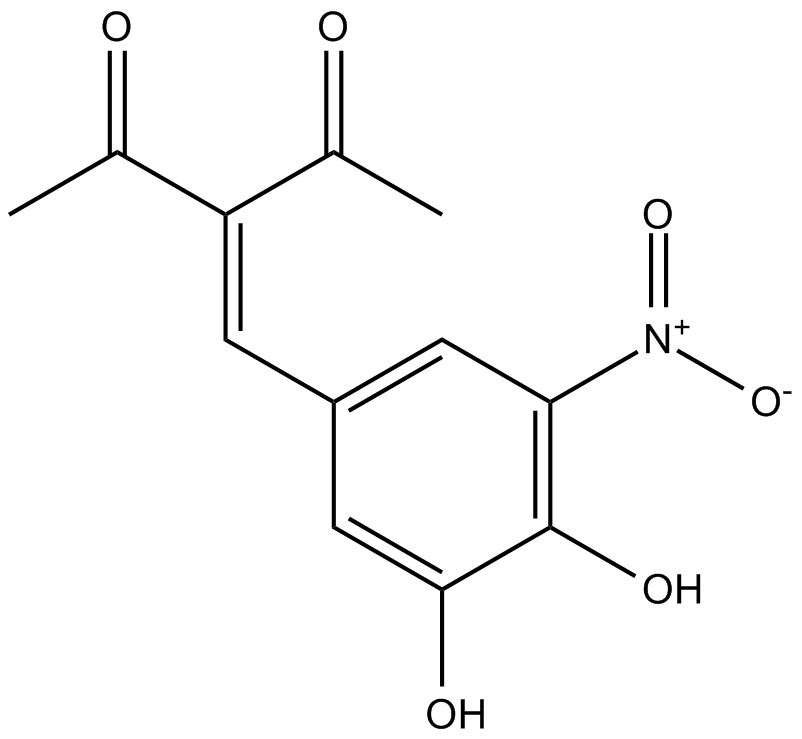Nitecapone (Synonyms: OR-462) |
| Catalog No.GC14223 |
Nitecapone(OR-462)은 위장 보호 및 항산화 특성을 가진 경구 활성 및 속효성 카테콜-O-메틸트랜스퍼라제(COMT) 억제제입니다.
Products are for research use only. Not for human use. We do not sell to patients.

Cas No.: 116313-94-1
Sample solution is provided at 25 µL, 10mM.
Nitecapone is S-COMT inhibitor [1].
Catechol-O-methyltransferase (COMT) plays an essential role in normal brain function and has been implicated in human disorders, such as Parkinson's disease. The COMT has been involved in the degradation of catecholamines including dopamine, epinephrine, and norepinephrine. [1].
In vitro: Nitecapone is a highly effective inhibitor of rat S-COMT with IC50 values of about 300 nM in the liver and 20 nM in the brain tissues. The Ki value in the rat liver was 23 nM. In pure recombinant COMT enzyme forms, the Ki value of nitecapone was around 1 nM [1]. Nitecapone was selective for COMT, inhibiting dopamine-β-hydroxylase, tyrosine hydroxylase, DOPA decarboxylase, and monoamine oxidase-A/B with IC50 values in the micromolar range [1].
In vivo: In rats, oral administration of nitecapone (3-30 mg/kg) in combination with levodopa and carbidopa effectively reduced 3-OMD formation and elevated serum and brain l-dopa, dopamine, DOPAC, and HVA levels. Nitecapone prevented ischemia-reperfusion injury in experimental heart surgery in rats. Nitecapone increased bicarbonate secretion from rat and human duodenum after both i.v. and intraluminal administration. High concentrations of nitecapone increased synthesis and secretion of gastric sulfomucin [1].
Reference:
[1] Mnnist P T, Kaakkola S. Catechol-O-methyltransferase (COMT): biochemistry, molecular biology, pharmacology, and clinical efficacy of the new selective COMT inhibitors[J]. Pharmacological reviews, 1999, 51(4): 593-628.
Average Rating: 5 (Based on Reviews and 26 reference(s) in Google Scholar.)
GLPBIO products are for RESEARCH USE ONLY. Please make sure your review or question is research based.
Required fields are marked with *




















